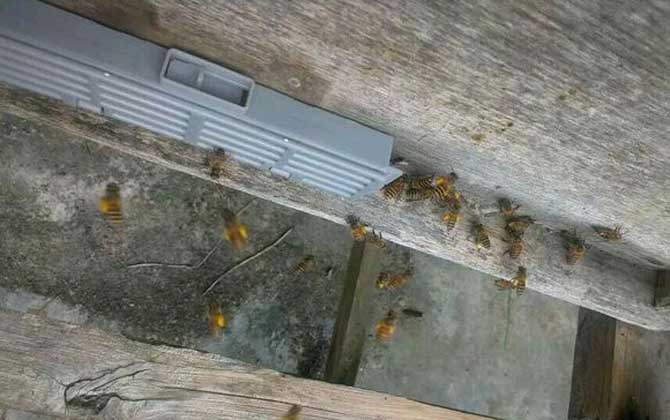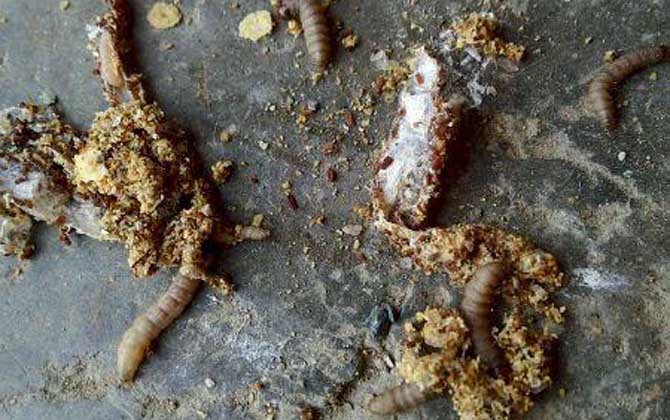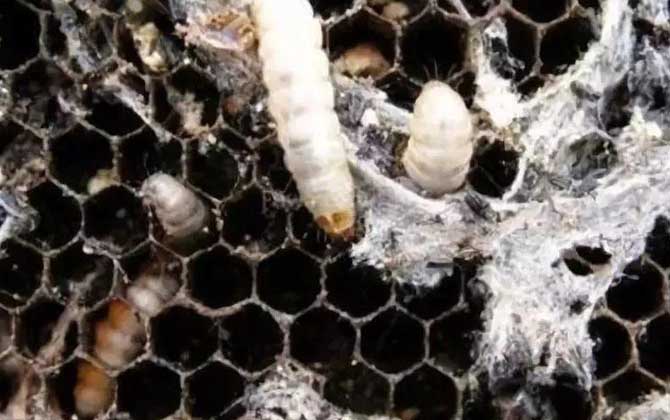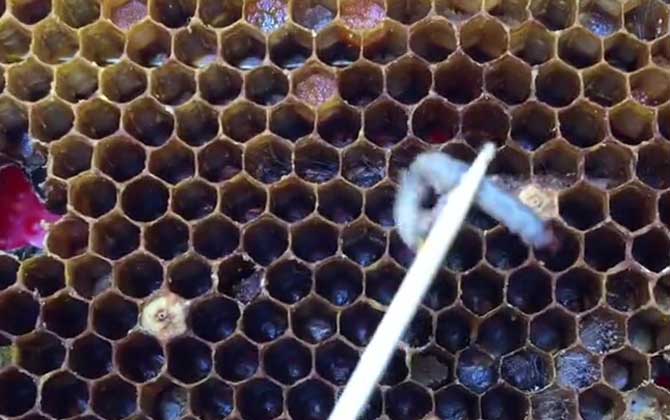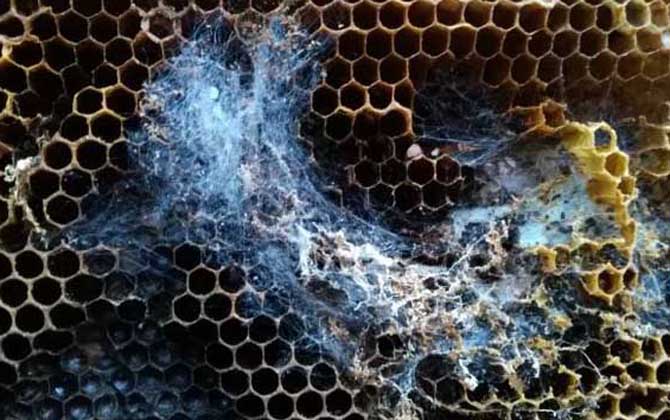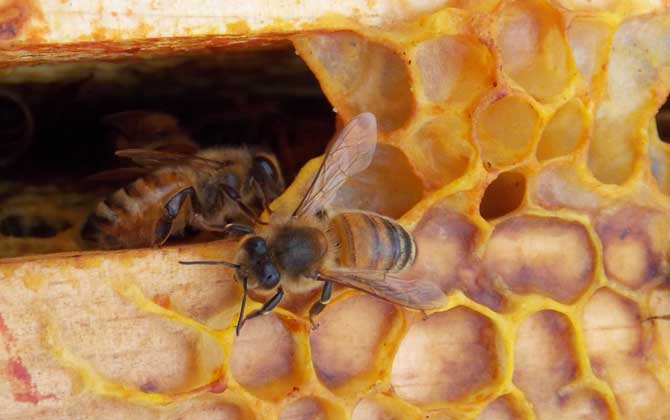Why Do Young Worker Bees Leave the Hive and Die? Key Causes in Beekeeping
2025-04-12
Understanding the Causes of Juvenile Bee Mortality Outside the Hive What Are Juvenile Bees? Juvenile bees, typically referring to worker bees aged 1-8 days after emergence, primarily engage in hive maintenance tasks. At 3 days old, they perform duties like temperature regulation, hive ventilation, and cell cleaning. By day 4, they begin honey processing, feeding older larvae, and undertaking orientation flights. Below we explore why juvenile bees sometimes crawl out of hives and die prematurely. Primary Causes of Premature Mortality 1. Nutritional Deficiencies Key factors: Insufficient food supply during colony expansion phases Monotonous diet lacking essential nutrients Developmental impairments from poor larval nutrition Consequences: Weak physical constitution, incomplete development, and early mortality post-emergence. Solutions: Implement supplemental feeding with balanced nutrition (pollen patties, sugar syrup mixtures) and diversify food sources. 2. Temperature Stress Heat-related issues: High-temperature wing deformity (>39℃/102℉) Fatal first-flight failures due to curled wings Cold-related issues: Low-temperature wing softening (sudden temperature drops) Impaired flight capability and hypothermia Management: Maintain optimal hive temperature (32-35℃/90-95℉) through proper ventilation, shade provision, and insulation measures. 3. Colony-Substrate Imbalance Critical concepts: Ideal ratio: Bee population exceeds comb capacity Acceptable range: Balanced bee-to-comb ratio Danger zone: Chronic bee deficiency relative to comb space Impacts: Reduced nursing capacity → inadequate brood care → developmental abnormalities. Prevention: Regular hive inspections, timely comb removal/addition, and maintaining strong colony populations. 4. Pathogen and Pest Infestations Major threats: Diseases: Sacbrood (Black Bee Disease), Nosemiasis, Chalkbrood Parasites: Varroa mites, Wax moths (Galleria mellonella) Toxic exposures: Pesticide contamination, poisonous nectar sources Symptoms: Abnormal crawling behavior, disorientation, wing deformities. Control measures: Implement integrated pest management (IPM) strategies Conduct regular hive health inspections Use approved miticides and fungicides Establish pesticide buffer zones around apiaries Additional Considerations Beekeepers should monitor for: – Genetic weaknesses in queen lines – Water source contamination – Hive positioning (avoid…
How to Effectively Eliminate Wax Moth Infestations in Beehives: Prevention and Control Methods
2025-04-10
Wax Moth Larvae: Major Threat to Honey Bees and Control Methods Introduction Wax moth larvae (Galleria mellonella and Achroia grisella), known as “nest worms” in Chinese apiculture, represent the most significant pest threat to honey bee colonies. These destructive insects feed on beeswax debris and burrow into comb cells, disrupting larval development and creating characteristic “bald pupae” through their destructive activities. Infested colonies experience rapid population decline, with severe cases leading to complete colony abandonment. Below we explore comprehensive solutions for effective wax moth control. I. Biological Classification Belonging to the Lepidoptera order and Pyralidae family, wax moths exist in two primary species: Greater Wax Moth (Galleria mellonella) Lesser Wax Moth (Achroia grisella) Both species demonstrate: Comb tunneling behavior through wax consumption Destruction of brood cells and stored pollen/honey reserves Secondary fungal/bacterial infection risks from larval excrement Economic impacts include 20-30% honey yield reduction in moderate cases and complete colony collapse in severe infestations. II. Infestation Process Colonization (March-April) Nocturnal mating flights under low colony vigilance Egg deposition in hive crevices (150-300 eggs/female) Larval Migration (8-23 days post-hatching) Initial wax debris consumption Vertical movement into comb structures Colony Impact Comb structural compromise Brood mortality (up to 60% in weak colonies) Pheromone-induced colony stress responses III. Integrated Pest Management Strategies A. Preventive Measures Hive Hygiene Protocol Daily bottom board scraping Weekly propolis removal Seasonal comb rotation (every 2-3 years) Colony Strength Maintenance Minimum 50,000 worker population threshold Supplemental feeding (1:1 sugar syrup during dearth periods) B. Active Control Methods Method Application Precautions Chemical Fumigation Carbon disulfide (CS₂) at 5g/m³ 48-hour hive evacuation Biological Control Bacillus thuringiensis strains Brood chamber avoidance Mechanical Traps Corrugated cardboard inserts Weekly replacement IV. Infestation Response Protocol Infestation Level Assessment Mild (<10% comb damage) Manual removal with stainless steel forceps Brood frame freezing (-7°C for 4 hours)…
Quick and Effective Methods to Eliminate Wax Moths: Protect Weak Bee Colonies from Hive Destruction
2025-04-10
Wax Moth Larvae: A Major Threat to Bee Colonies Wax moth larvae (Galleria mellonella and Achroia grisella), commonly known as “hive worms,” rank among the most destructive pests in beekeeping. Primarily targeting weak colonies, these parasites tunnel through honeycomb wax, damage brood cells, and attack bee larvae/pupae. Mild infestations reduce honey yield and quality, while severe cases force entire colonies to abandon their hives. Below we explore effective eradication methods and comprehensive management strategies. 1. Species Overview Taxonomic Classification: Kingdom: Animalia Phylum: Arthropoda Class: Insecta Order: Lepidoptera Family: Pyralidae Subfamily: Galleriinae The greater wax moth (Galleria mellonella) and lesser wax moth (Achroia grisella) are primary culprits. Their larvae exhibit remarkable adaptability, consuming beeswax, pollen residues, and even plastic foundation sheets in modern hives. 2. Infestation Process Three-phase Invasion: Infiltration (March-April) Nocturnal adult moths exploit weak colony defenses Females lay 300-600 eggs in hive crevices/wax debris Eggs hatch in 8-23 days depending on temperature Colonization Larvae initially feed on wax/propolis debris Gradual migration to brood comb areas Silk tunnels compromise comb structural integrity Destruction Direct predation on bee larvae/pupae Secondary bacterial infections from fecal contamination Comb collapse triggers colony abandonment 3. Eradication Techniques Integrated Pest Management: Infestation Level Action Plan Effectiveness Mild (<10% comb affected) Manual removal with tweezers Freeze frames (-7°C for 4-5 hours) Apply diatomaceous earth to floorboards 85-90% control Moderate (10-30% damage) Queen excluder compartmentalization Bacillus thuringiensis sprays CO2 fumigation (professional use only) 70-80% recovery Severe (>30% infestation) Complete hive relocation Comb irradiation treatment Introduction of resistant bee stocks (e.g., Russian hybrids) Requires colony restart 4. Preventive Strategies Proactive Measures: Hive Strength Maintenance: Keep colonies populous (>8 frames of bees) Wax Management: Regularly rotate old combs (replace every 2-3 years) Physical Barriers: Install mouse guards with ≤3.5mm openings Temperature Control: Maintain hive temperature at 34-35°C (disrupts moth development)…
Effective Wax Moth Control Methods: Best Strategies to Eliminate Hive Pests and Protect Honey Bees
2025-04-10
Wax Moths: Destructive Pests in Beehives Wax moths (Galleria mellonella and Achroia grisella) pose significant threats to honeybee colonies worldwide. As larvae of wax moths, these pests not only damage honeycombs by consuming beeswax but also destroy bee larvae and pupae. Mild infestations reduce honey production, while severe cases can force entire colonies to abandon their hives. Below we explore comprehensive control methods for these destructive insects. Figure 1: Wax moth larvae infesting honeycomb cells I. Life Cycle and Damage Process Stage 1: Infiltration (March-April) Nocturnal mating: Female moths mate with males at night when bee colonies are less vigilant Egg deposition: Post-mating females lay 300-600 eggs in hive crevices or wax debris (optimal temperature: 29-35°C) Camouflage: Eggs blend with wax particles due to similar coloration Stage 2: Larval Development (8-23 days) Mobile hatchlings: Newly emerged larvae measure 1-2mm with high mobility Migration pattern: Larvae gradually move upward from hive bottom to combs Initial tolerance: Worker bees initially ignore early-stage larvae Stage 3: Colony Destruction Comb destruction: Larvae create silk-lined tunnels through wax structures Secondary damage: Weakened combs collapse, destroying brood and food stores Colony collapse: Weak colonies (<20,000 bees) often abandon hives when ≥30% comb destruction occurs Figure 2: Severe honeycomb damage caused by wax moth larvae II. Integrated Pest Management Strategies 1. Hive Maintenance Weekly wax removal: Clean all debris using hive tools with ≥70° angled blades Comb rotation: Replace 30% of old combs annually (dark combs attract more moths) Physical barriers: Install 3mm mesh screens at hive entrances 2. Colony Strengthening Techniques Optimal population: Maintain colonies with ≥50,000 worker bees Queen management: Replace queens every 12-18 months to maintain brood viability Feeding protocol: Use 1:1 sugar syrup with 0.2% probiotic supplements during dearth periods 3. Chemical Controls Treatment Application Efficacy Para-dichlorobenzene crystals 5g/10L hive volume 95% larval…
How to Eliminate Wax Moth Larvae in Beehives: Effective Control and Prevention Methods
2025-04-10
Wax Moth Larvae: A Major Threat to Bee Colonies Wax moth larvae (Galleria mellonella), commonly known as “hive worms” or “comb worms,” rank among the most destructive pests in beekeeping. These voracious pests not only tunnel through honeycomb frames to consume beeswax but also damage brood cells and developing bees. Severe infestations can force entire colonies to abandon their hives. Below we explore comprehensive solutions for managing wax moth infestations. Identifying the Problem Stage 1: Minor Infestation When dealing with limited wax moth presence: Remove affected frames using hive tools Use precision tweezers to extract dead pupae and visible larvae Inspect cell bases with magnifying glass for hidden larvae Allow worker bees to handle residual pests Implement daily wax debris removal from hive bottom Stage 2: Moderate Infestation For medium-level outbreaks: Isolate contaminated frames using queen excluders Maintain worker bee access to both hive sections Remove empty frames after brood emergence Treat salvageable combs with organic pyrethrum spray Incinerate severely damaged combs and replace frames Stage 3: Severe Infestation When facing critical infestations: Perform complete hive relocation using swarm capture techniques Introduce new sterilized frames with foundation sheets Supplement with brood frames from healthy colonies Install entrance reducers with beetle traps Implement protein-rich supplemental feeding Integrated Pest Management Strategies Preventive Measures Maintain strict hive hygiene through weekly debris removal Freeze extracted combs at -7°C (19°F) for 24 hours before storage Use essential oil blends (tea tree + eucalyptus) as natural deterrents Chemical Controls Fumigation treatments: Carbon disulfide (CS₂) gas chambers Formic acid vaporization Controlled sulfur dioxide (SO₂) application Targeted pesticides: Bacillus thuringiensis var. galleriae formulations Chlorantraniliprole-infused comb strips Natural diatomaceous earth applications Biological Controls Introduce beneficial nematodes (Steinernema carpocapsae) Maintain strong colonies with young, prolific queens Use screened bottom boards for natural pest drop Proactive Hive Management Tips Conduct monthly…
Best Chemical Treatments for Wax Moth Larvae Control in Chinese Beekeeping: Effective Solutions
2025-04-09
Wax Moth Larvae: Major Pest in Beekeeping Wax moth larvae (commonly called “hive worms”) rank among the most destructive pests in apiculture. These larvae of wax moths (Galleria mellonella and Achroia grisella) not only tunnel through comb wax but also damage bee brood, potentially causing colony collapse. Let’s explore effective control methods and medications. I. Biological Classification Wax moth larvae belong to: Kingdom: Animalia Phylum: Arthropoda Class: Insecta Order: Lepidoptera Family: Pyralidae Subfamily: Galleriinae Two primary species threaten honey bees: 1. Greater Wax Moth (Galleria mellonella) 2. Lesser Wax Moth (Achroia grisella) Their larvae consume beeswax, pollen residues, and bee brood secretions, weakening comb structure and causing up to 80% colony losses in severe infestations. II. Recommended Treatments Three effective chemical controls: Hive Clean Wood Strips: – Mechanism: Emit attractants to lure larvae from combs – Effect: Causes digestive paralysis within 24-48 hours – Advantage: Non-toxic to bees; worker bees remove incapacitated larvae Chaochongjing: – Active ingredient: 20% Chlorantraniliprole – Action: Targets ryanodine receptors, causing calcium dysregulation – Result: Muscle paralysis and death within 72 hours – Application: 5ml per hive as preventive treatment Hive Mite-Away: – Formulation: Emulsifiable concentrate (500ml/bottle) – Dilution: 1:500 with water – Coverage: Treats 100 hives or 250 comb frames – Best use: Direct comb spraying during honey flow periods III. Integrated Pest Management Three-tiered prevention strategy: Hive Maintenance: – Scrape hive floors weekly – Freeze combs (-7°C for 4 hours) before reuse – Replace 30% old combs annually Colony Management: – Maintain colony strength >50,000 bees – Use queen excluders to limit brood area – Apply protein supplements (e.g., MegaBee™) to boost bee immunity Biological Controls: – Introduce Bacillus thuringiensis (BT) strains – Use parasitic wasps (Trichogramma spp.) – Apply diatomaceous earth around hive stands IV. Prevention Timeline Season Action Frequency Spring Hive inspection…
Effective Varroa Mite Control Strategies for Beekeepers: Protecting Hives from Infestation
2025-04-08
Effective Strategies for Varroa Mite Control in Beekeeping Varroa mites (Varroa destructor) are destructive external parasites of honey bees that pose significant threats to colony health. Mild infestations can reduce brood production and weaken worker bees, while severe cases often lead to complete colony collapse. As beekeepers continue to struggle with mite management, here we explore the most effective integrated pest management approaches. 1. Selective Breeding for Resistant Bee Species Different bee species exhibit varying resistance levels to varroa mites: Italian Honey Bees (Apis mellifera ligustica): Naturally vulnerable but can develop improved resistance through selective breeding programs (e.g., Eastern No.1, Beijing No.1 strains) Chinese Honey Bees (Apis cerana): Native Asian species demonstrating strong natural resistance through grooming behavior and shorter brood cycles Modern solutions include developing varroa-sensitive hygiene (VSH) traits in commercial strains through controlled mating programs. 2. Maintaining Strong Colonies Robust colonies demonstrate better mite resistance through: Enhanced worker-to-brood ratio for effective brood care Superior hygienic behavior for mite detection and removal Optimal population density limiting mite reproduction Seasonal management tips: – Boost colony strength before spring nectar flow – Monitor winter cluster size in temperate regions 3. Utilizing Natural Broodless Periods Strategic timing using bees’ biological cycles: Period Characteristics Treatment Advantage Early Spring (pre-queen laying) No capped brood cells Mites exposed on adult bees Late Fall (winter preparation) Brood production ceases 90%+ mites phoretic on workers Recommended treatments during these periods: Oxalic acid dribble or vaporization 4. Artificial Brood Interruption A 21-day queen confinement protocol: Isolate queen using queen excluder cage Remove all existing brood frames Apply miticides targeting phoretic mites Release queen after 3 weeks Note: Requires supplemental feeding during broodless period 5. Integrated Chemical Control Treatment Types Contact Miticides: Apistan®, CheckMite+® Fumigants: Formic acid pads Natural Compounds: Thymol-based products Best Practices Rotate treatment classes annually Follow…
Effective Methods to Control Wax Moth Larvae in Chinese Honey Bee Colonies: Prevention and Elimination Strategies
2025-04-07
How to Effectively Control Wax Moth Larvae (Hive Beetles) Understanding the Threat Wax moth larvae (Galleria mellonella), commonly known as hive beetles, pose a significant threat to Chinese honey bees (Apis cerana). These destructive pests feed on beeswax debris and burrow into comb cells, damaging honeycomb structures. Their activities prevent proper capping of bee larvae/pupae, leading to characteristic “white-headed pupae” deformities. Infested colonies may experience autumn decline or even complete abandonment of the hive. Six Proven Control Strategies 1. Maintain Strong Colonies Vigorous colonies demonstrate natural resistance through: Guard bees effectively block adult moth intrusion Workers actively remove larvae and protect combs Optimal bee-to-comb ratio ensures complete comb coverage Key practices include maintaining adequate honey/pollen stores and ensuring more bees than combs (at least 2:1 ratio). Strong colonies can sustain minimal damage even when infested. 2. Regular Queen Replacement Annual queen renewal enhances colony vitality: Young queens (6-12 months old) maintain high egg-laying capacity Prevents genetic degeneration through controlled breeding Introduce superior genetic stock every 2 years for apiary improvement 3. Hive Sanitation Management Disrupt the wax moth life cycle through: Daily removal of wax debris from hive floors Weekly inspection and cleaning of hive crevices Sealing cracks with non-toxic putty or propolis This eliminates egg-laying sites and food sources for larvae. 4. Comb Rotation System Implement a 3-year comb replacement cycle: Asian bees naturally prefer new combs (≤1 year old) Old combs (>3 years) become breeding grounds for pests Regular replacement disrupts larval development cycles 5. Equipment Sterilization Techniques Winter management protocols: Flame treatment: Use alcohol torches (120-150°C) to sterilize hive surfaces Cryogenic treatment: Freeze combs at -7°C for 5-7 hours UV exposure: Sunlight disinfection for 4-6 hours 6. Chemical Control Methods Emergency treatments for severe infestations: Treatment Application Dosage Carbon disulfide Fumigation 10ml/super box Formic acid (96%) Vapor…
